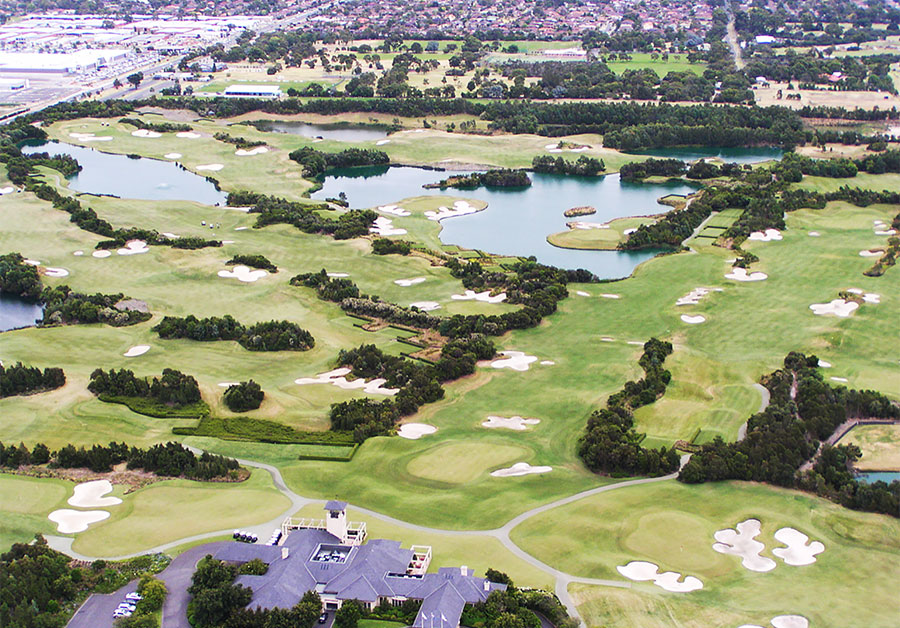It’s difficult to predict what the future of the golf-club landscape in Australia will look like. In just the past few weeks alone, we’ve seen the touted merger between The National and Huntingdale clubs scuttled plus the closure of a worthy and much-loved public facility in Sydney’s Hudson Park Golf Course. Back in Melbourne, it was speculated that Rossdale Golf Club might move to the uber-private Capital course before that idea was snuffed out thanks to the near zero likelihood of the Rossdale site being rezoned.
To say things are volatile in clubland is like saying golfers hate three-putting. In recent years, clubs have closed, moved, merged or at least entertained the thought of merging in two or even three-way deals. Things seem perpetually precarious and more settled times appear to be distant.
Which begs the question: what should golf clubs in 2019 look like? What should they be striving for? And, what is realistic – and sustainable?
Having heard a few of the rationales behind some of the merger deals, I would argue that under the right circumstances a consolidation of golf clubs isn’t necessarily a bad sign. For starters, particularly in a three-clubs-into-two scenario, every party wins. Consider this hypothetical, although quite realistic, situation: three clubs agree to merge into one entity, bolstering the bottom line by selling off the land that’s home to the third-best layout. Meanwhile, the members of all three clubs retain use of both the remaining sites and enjoy the use of two (perhaps quite different) courses in separate locations, possibly with funds available for a refresh of the two surviving layouts. The loss of one golf facility aside, the upside outweighs the downside and, if executed properly, improves the financial outlook of the merged club.
A consolidation of golf clubs isn’t necessarily a bad sign.
Superficially, the loss of a course or two is far from a positive scenario, yet providing golfers are able to access improved facilities, it’s not necessarily the doomsday situation some might perceive it to be.
But perceptions are difficult to shake. Which can be the case at places like the aforementioned Capital in Melbourne, which soaks up a considerable chunk of land in suburbia but is utilised by so very few. If everyday golf clubs are feeling the heat from outside for what is (usually speciously) viewed as attracting limited use, what then of facilities like Capital that sees significantly less golfer traffic than average? Whether socially, morally or optically – take your pick – it is not a good look for the sport.

Fortunately, many clubs are embracing the changing landscape of their offerings, which is having the twin benefits of becoming more multi-purpose and more appealing. In Perth, Lake Karrinyup holds ‘Pizza and Peroni’ nights on Fridays to encourage greater member visitation, ideally with their family in tow so kids can make use of the jumping castle. Venerable Victoria Golf Club, which is welcoming back full play after a period during the summer when key parts of the course were being renovated, staged a night for members in early March that included food trucks in the clubhouse precinct and live music on the first fairway. And these are two of the more sought-after clubs in the land. Many other clubs are doing similarly as a way of giving members good reason to utilise the facility more often, even if without clubs and balls. It’s all about seeing the golf club as more than merely a place to play the game.
Golf is repeatedly instructed from outside to move with the times – and justifiably so in many instances. In others, the sport is forced to duck and weave with the changing social and economic climate (and also the actual climate). In the curious realm of membership, clubs are adapting to the needs of their existing members and the surrounding region, all while trying to stay in line with the broader golf landscape.
It’s far from an easy situation and there are no one-size-fits-all solutions. However, adopting an innovative approach and giving golfers more reasons to be on the premises can’t hurt.




